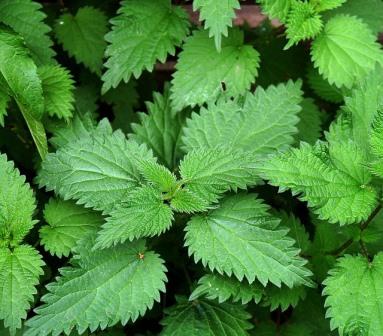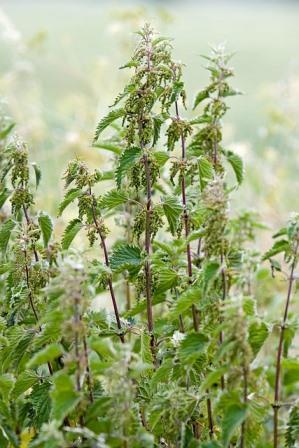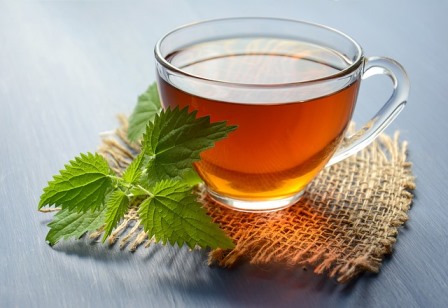Wild Garlic, Sweet Wild Garlic, Wilde Knoffel, Soetwildeknoffel, Isihaqa, utswelane - Tulbaghia
 Tulbaghi fragransCondensed Version:
Tulbaghi fragransCondensed Version:
The two most popular tulbaghias with gardeners are the Cape Wild Garlic (Tulbaghia violacea) and Sweet Wild Garlic (Tulbaghia simmleri), because they have attractive flowers throughout the growing season and are proven low maintenance landscaping plants.
(Cape Wild Garlic)
Cape Wild Garlic can reach a height of +-35 to 50cm; forming a clump +-25 to 30cm wide. The long, narrow, strap-like, slightly fleshy leaves smell strongly of garlic when bruised. Clusters of up to 20 mauve, tubular flowers, are held above the leaves on a tall flower stalk, and appear over a long period from September to April.
It can be planted in both full sun and partial shade; is hardy to frost and thrives in hot, dry beds, making it useful for those difficult hot corners of the garden; requiring only moderate watering during dry spells to keep it looking great.
(Sweet Wild Garlic)
Sweet Wild Garlic has grey-green leaves and larger flowers than Tulbaghia violacea. The lavender-pink flowers are excellent cut flowers and will fill an entire room with their sweet fragrance. In its summer-rainfall habitat it will flower from spring to autumn, whereas at Kirstenbosch, with its winter-rainfall climate, it flowers during the winter months and into spring. The leaves are not as strong smelling as Tulbaghia violacea; smelling of onions if crushed.
It is easy to grow and hardy to moderate frost, but is not hardy to prolonged freezing temperatures. It also prefers a lightly shaded position, or morning sun and afternoon shade. The plant grows +-20 to 35cm tall and wide; is suitable for temperate and subtropical areas, and will tolerate humidity.
 Tulbaghia simmleri Full Version:
Tulbaghia simmleri Full Version:
Description, History & Interesting Facts:
Tulbaghia are bulbous or rhizomatous clump-forming perennials with linear, leaves and umbels of small, star-shaped flowers with a small cup-like corona. It is a small genus of about 20 species from southern Africa, and several cultivars exist for some species.
The Latin name Tulbaghia was named after Ryk Tulbagh (1699-1771), governor of the Cape of Good Hope, who corresponded with and sent plants from the Cape to Carl Linnaeus; violacea means violet-coloured.
The two most popular tulbaghias with gardeners are Tulbaghia violacea and Tulbaghia simmleri, because they have attractive flowers throughout the growing season and are proven low maintenance landscaping plants.
Most of the species of tulbaghia are adapted for moth pollination, with flowers that become sweetly scented at night. Tulbaghia violacea, however, seems to be pollinated by butterflies and bees because it is scented during the day.
Cape Wild Garlic, utswelane, isihaqa (Tulbaghia violacea)
This is a very cold hardy and fast growing little evergreen plant which can be found growing wild in the Little Karoo, the Eastern Cape and in Kwazulu-Natal; commonly found growing on moist sandy coastal soils, near rivers, in grasslands and on rocky slopes. It can reach a height of +-35 to 50cm; forming a clump +-25 to 30cm wide. The long, narrow, strap-like, slightly fleshy leaves smell strongly of garlic when bruised. Clusters of up to 20 mauve, tubular flowers, are held above the leaves on a tall flower stalk, and appear over a long period from September to April. The flowers also smell of garlic when bruised. The fruits are small 3 sided capsules which split open to disperse the flattened, hard black seeds. It is often used in hybridization with other tulbaghia species.
This popular water-wise plant is so adaptable; growing in both full sun and partial shade. It is hardy to frost and thrives in hot, dry beds, making it useful for those difficult hot corners of the garden; requiring only moderate watering during dry spells to keep it looking great.
Variegated Wild Garlic (Tulbaghia violacea 'Silver Lace')
'Silver Lace' is a hybrid cultivar with attractive variegated grey and white striped leaves that are also garlic scented when bruised. Umbels of delicate mauve flowers on long stalks are borne throughout most of the year; and are sweetly scented at night. It grows +-30 to 50cm tall and can thrive in very poor soils.
Sweet Wild Garlic, Fragrant Tulbaghia, Soetwildeknoffel, Aandblommetjie (Tulbaghia simmleri) (= Tulbaghia fragrans)
This evergreen summer rainfall species is endemic to a relatively small area in the northern Drakensberg of Mpumalanga and in Limpopo, growing in isolation on rocky ledges, or in fairly dense colonies, in light but humid mountain forests at moderate altitudes between 960 to 1120m.
It has grey-green leaves and larger flowers than Tulbaghia violacea. The lavender-pink flowers are excellent cut flowers and will fill an entire room with their sweet fragrance. In its summer-rainfall habitat it will flower from spring to autumn, whereas at Kirstenbosch, with its winter-rainfall climate, it flowers during the winter months and into spring. The leaves are not as strong smelling as Tulbaghia violacea; smelling of onions if crushed.
It is easy to grow and hardy to moderate frost, but is not hardy to prolonged freezing temperatures. It also prefers a lightly shaded position, or morning sun and afternoon shade. The plant grows +-20 to 35cm tall and wide; is suitable for temperate and subtropical areas, and will tolerate humidity.
Tulbaghia fragrans 'Alba'
'Alba' has pure white flowers.
Uses:
Tulbaghia violacea is used in a variety of ways by indigenous people. The Zulus plant it around huts to keep snakes away; and the rhizome is also used to make an aphrodisiac medicine. Because of its strong smell when crushed, the leaves may discourage moles from the garden. The smell also repels fleas, ticks and mosquitoes when crushed on the skin; and may be effective in discouraging cats from the garden.
 Health Benefits:
Health Benefits:
Several species of Tulbaghia have economic and medicinal importance; and a recent study of Tulbaghia violacea has also shown properties which may hold the potential for treating high blood pressure (hypertension). The leaves and rhizomes have found various medicinal uses, including the treatment of coughs, colds, flu, fevers, tuberculosis, asthma, and oesophageal cancer. The bulb has also been used as a remedy for intestinal worms. Wild garlic may prove to have the same or similar antibacterial and antifungal activities as has been scientifically verified for real garlic.
Tulbaghia simmleri is not generally used in traditional medicine, but is sometimes used as a substitute for T. violacea. The leaves are eaten fresh or cooked; but it seems that the much weaker garlic-like smell would indicate that it contains a lower concentration of the active sulphur compounds, thus making it a less effective medicine.
Pets:
The leaves can be used in dog kennels to keep fleas and ticks away; and the strong smell may keep cats out of your garden.
Click here to read my article on herbs that are good for cats and dogs
Culinary:
The Zulus use the leaves and flowers as spinach and as a hot, peppery seasoning with meat and potatoes. Both the leaves and flowers can be used in salads and other dishes much like chives and the bulbs can be used like spring onions.
In the Garden:
Wild garlic is a popular groundcover for large open areas on pavements, in complexes, office parks and shopping centre parking lots. It can also be used to good effect in rockeries, courtyard gardens and as an edging plant.
Companion Planting:
Wild garlic is a good companion plant for roses and other shrubs prone to aphid attack.
 Tulbaghia violaceaCultivation/Propagation:
Tulbaghia violaceaCultivation/Propagation:
(Tulbaghia violacea) is a very popular water-wise plant; growing in both full sun and partial shade. It is hardy to frost and thrives in hot, dry beds, making it useful for those difficult hot corners of the garden; requiring only moderate watering during dry spells to keep it looking great.
(Tulbaghia simmleri) is easy to grow and prefers a lightly shaded position, or morning sun and afternoon shade. It is suitable for temperate and subtropical areas, and will tolerate humidity. It is hardy to moderate frost, but is not hardy to prolonged freezing temperatures.
Tulbaghias grows very easily in most well-drained soils. Add some compost to the planting holes and mulch annually to keep the plants growing vigorously and blooming. Although these tough plants will tolerate long periods of drought, they thrive in the garden if watered moderately during prolonged hot, dry spells. Leave the plants undisturbed for as long as possible, but very large clumps can be divided in spring or autumn.
Propagate from seed sown in spring into deep seedling trays, to be planted out during their second year. Propagation is very easy by division of large clumps. Once the clumps that have been divided, they should be left undisturbed for as long as possible.
 Problems, Pests & Diseases:
Problems, Pests & Diseases:
Tulbaghias seldom fall prey to pests and diseases, but slugs and snails can cause considerable damage to the foliage.
Toxicity:
Wild garlic is not poisonous.
Caution:
The information contained within this website is for educational purposes only, recording the traditional uses of specific plants as recorded through history. Always seek advice from a medical practitioner before starting a home treatment programme.
Wild Garlic, Sweet Wild Garlic, Wilde Knoffel, Soetwildeknoffel, Isihaqa, utswelane - Tulbaghia
Wild Garlic, Sweet Wild Garlic, Wilde Knoffel, Soetwildeknoffel, Isihaqa, utswelane - Tulbaghia
Shrubs & trees for summer & autumn
February
Frugal vegetable gardening tips
10 stars of the winter flower garden
March
Stinging Nettle, Common Nettle, Gewone Brandnetel, Umbabazane - Urtica dioica
 Stinging Nettle Image by ImageParty from PixabayCondensed Version:
Stinging Nettle Image by ImageParty from PixabayCondensed Version:
The benefits of stinging nettle are too many to count and this ancient herb has been forgotten for too long, but is now making a huge comeback because of its phenomenal health benefits. It has been used medicinally since the earliest times; and the entire plant is of value including the leaves, roots, stems and flowers.
Nettles are divided into at least five subspecies, each of which is slightly different; but they are all herbaceous perennials, which have an upright, sprawling habit and grow about 1 to 2m tall. The soft, serrated leaves are opposite each other in pairs on the stem. The leaves and the rest of the plant are coated in stinging and non-stinging hairs.
The plant spreads by underground roots which are noticeably yellow. The tiny greenish-white flowers, each with four petals, are densely clustered on elongated inflorescences towards the top of the stem. The plant will go dormant in winter and is one of the first greens to emerge in the spring. The thought of eating nettles might alarm you, but drying, juicing, cooking or making a tea with the fresh leaves takes all the fight out of it and what is left is quite an amazing super food. The young leaves can be cooked like spinach and taste great with garlic and butter. The dried herb can be stored in jars and added to soups and stews throughout the year.
Stinging nettles are used in organic farming as a fertiliser and as a companion plant for the vegetable garden because of their ability to regulate the iron content in the soil; and because iron is a prerequisite for the formation of chlorophyll needed by all plants; nettles will strengthen plants growing in close proximity to them. They are also great to add to the compost pile and will hasten breakdown.
Stinging nettle grows like a weed in moist, shady areas and will not be confined to a particular spot; so it is recommended that it be confined in the garden in raised beds or grown in pots to prevent unwanted expansion. The plant can be harvested regularly during the growing season and is best when it is less than knee high; but please remember to wear thick gloves. Cut the branches down to about half their height so that the plant will quickly recover and you can get another cutting.
 Stinging Nettle Image by No longer here from PixabayFull Version:
Stinging Nettle Image by No longer here from PixabayFull Version:
Description, History & Interesting Facts:
The benefits of stinging nettle are too many to count and this ancient herb has been forgotten for too long, but is now making a huge comeback because of its phenomenal health benefits.
It has been used medicinally since the earliest times; and the entire plant is of value including the leaves, roots, stems and flowers. Traces of nettles were found at the remains of Neolithic stilt dwellings in Switzerland dating back to the third millennium B.C. The term “nettle” is also very old, originating from the Old German term “nezzila”, which in turn is related to the word “net” and refers to an early method of fibre production for the manufacture of untreated cotton. A plant related to the nettle - the ramie - is still an important fibrous plant.
Medieval monks would flagellate themselves with nettle for penance; and legend has it that Roman soldiers brought stinging nettles to Britain as they used the plants to beat themselves with to encourage surface blood circulation, in an effort to keep warm in England’s cold and damp climate. During World War II, nettles were used as green camouflage paint. If you are into primitive skills, nettles stems have a lot of fibre and make fine cordage, if harvested when the plant stems are old and tough, but not dried or withered.
Urtica dioica is widespread through Europe and North America, and also occurs in North Africa and parts of Asia. There are also naturalised populations in many colder, moist climates of the world. Netle is well known for its toothed, hairy leaves and for its sting. The painful sensation of nettle stings occurs when toxins from specialised hairs are delivered into the skin. Each stinging hair has a bulbous tip which breaks off to leave a sharp, needle-like tube that pierces the skin and injects histamine and acetylcholine, causing itching and burning that may last up to 12 hours.
Nettles are divided into at least five subspecies, each of which is slightly different; but they are all herbaceous perennials, which have an upright, sprawling habit and grow about 1 to 2m tall. The soft, serrated leaves are opposite each other in pairs on the stem. The leaves and the rest of the plant are coated in stinging and non-stinging hairs.
The plant spreads by underground roots which are noticeably yellow. The tiny greenish-white flowers, each with four petals, are densely clustered on elongated inflorescences towards the top of the stem. The plant will normally go dormant in winter and is one of the first greens to emerge in the spring.
Uses:
Today the plants are harvested commercially for extraction of the chlorophyll, which is used as a green colouring agent in medicines and food.
Dried, they are also a highly useful fodder with a protein content equivalent to lucerne/clover. Despite its stalky nature it is well digested by stock animals; even pigs, fowl and rabbits.
When fed to lactating animals it encourages more milk production; and when added to chicken feed helps chickens produce more eggs.
 Herbal Tea. Image by Mareefe from PixabayHealth Benefits:
Herbal Tea. Image by Mareefe from PixabayHealth Benefits:
The thought of eating nettles might alarm you, but drying, juicing, cooking or making a tea with the fresh leaves takes all the fight out of it and what is left is quite an amazing super food. The young leaves can be cooked like spinach and taste great with garlic and butter. The dried herb can be stored in jars and added to soups and stews throughout the year.
The stinging nettle plant has many traditional uses, mainly in the anti-inflammatory, cardiovascular and urogenital departments. Because it is a natural diuretic and will cleanse the system, it is still considered a wonderful anti-inflammatory plant, with studies showing its effectiveness in treating rheumatic pain, arthritis and gout. It also builds energy, strengthens the adrenals, and is said to restore youthful flexibility to blood vessels. The use of nettle root extract in benign prostate hyperplasia is also being studied intensely and offers amazing promise for older men. Studies have also confirmed its traditional use for allergies. Nettles are also reputed to help prevent hair loss; and can be used like an Analgesic for pain. Nettles are rich in calcium, and contain generous amounts of bone-building magnesium, potassium, silicon, boron, and zinc. They are also high in vitamin C and an excellent source of vitamins A, D, E, and K.
An infusion (tea)
For internal use, an infusion (tea) is made from the dried or fresh leaves to treat anaemia, kidney stones, haemorrhage (especially of the uterus), heavy menstrual bleeding, haemorrhoids, arthritis, gout, rheumatism, skin complaints and especially eczema. Both the leaves and roots are used to treat allergies; and for prostate enlargement the roots are used.
Externally nettle tea is used to treat gout and arthritic pain, neuralgia, nosebleeds, haemorrhoids, scalp and hair problems, as well as burns and insect bites.
Make a habit of purifying your blood at least twice a year by drinking this tea every day for one month. You will feel revived with tons of energy and able to work like never before.
To make an infusion (tea)
Use 1 teaspoon (5grams) of dried or fresh finely chopped fresh leaves, or roots, to 1 cup of boiling water.
Allow to steep well and take the tea 3 times per day.
If you wish to make up more, use one cup of the herb in 1 litre of boiling water.
To make a tincture
To make a tincture from the roots, lift and divide the roots in spring or autumn and clean before chopping and placing in a bottle and covering with Vodka; leave to infuse in a warm place for 14 days, agitating occasionally, strain and re-bottle.
More nettle products are showing up on the shelves in stores. Nettle root, nettle leaf and whole herb (leaf, stem and root) products in tablets, capsules, and tinctures are now widely available at most health food stores at very reasonable prices.
Consumers just need to remember that the root is much better for benign prostatic hyperplasia (BPH) and hair loss, while the leaf is better for inflammation (including prostatitis), allergies, and as a natural diuretic for people with hypertension.
 Image by Hans Jürgen Münzer from PixabayPets:
Image by Hans Jürgen Münzer from PixabayPets:
Not only humans can make use of the helpful effects of the stinging nettle; it is also used to treat birds, dogs and cats.
For dogs and cats the dried herb can be sprinkled onto their food (dandelion is often mixed with the nettle) to help with a variety of common problems including eczema, dermatitis, skin irritation and arthritis; as well as to maintain good health.
For cats that exhibit seasonal allergies to pollen, stinging nettle extract is effective; add some extract to your cat's canned food or water to help relieve congestion and sneezing.
You can also serve the young tips of the stinging nettle to any kind of pet bird; it is often used as a cleansing tea for racing pigeons and is especially good for treating birds that suffer from kidney problems.
Pouring or washing the plant with some hot water will neutralise the stings.
These fresh sprouts are extremely rich in vitamins and minerals and some bird couples use them for feeding their chicks. Just cut the leaves into small pieces and mix them into the hatching food while your budgies have to care for their brood.
Click here to read my article "Herbs that are good for dogs and cats"
Caution:
Remember to consult with your veterinarian before treating a sick animal.
In the Kitchen:
Stinging nettle has a flavour similar to spinach and cucumber when cooked. The young leaves can be cooked like spinach and taste great with garlic and butter.
In the Garden & Companion Planting:
This plant is a great attractor for butterflies and the caterpillars of several Lepidoptera species are dependent upon it for food. Stinging nettles are used in organic farming as a fertiliser and as a companion plant for the vegetable garden because of their ability to regulate the iron content in the soil; and because iron is a prerequisite for the formation of chlorophyll needed by all plants; nettles will strengthen plants growing in close proximity to them. They are also great to add to the compost pile and will hasten breakdown.
 Cultivation & Harvesting:
Cultivation & Harvesting:
Stinging nettle grows like a weed in moist, semi-shady areas and will not be confined to a particular spot; so it is recommended that it be confined in the garden in raised beds or grown in pots to prevent unwanted expansion. It thrives if watered moderately and enjoys deep fertile soil, but will adapt to most garden soils. It is also very hardy and because it will go dormant in winter, can survive freezing conditions. The plant can be harvested regularly during the growing season and is best when it is less than knee high; but please remember to wear thick gloves when harvesting. Cut the branches down to about half their height so that the plant will quickly recover and you can get another cutting.
Propagation:
Seeds are not easy to obtain, but nettles grow well if the rootstock is divided when the plant is dormant in winter.
 Problems, Pests & Diseases:
Problems, Pests & Diseases:
Nettles have been around for so long that nothing much can kill them off; and even insects know that nettle is good for them, with at least 30 species of insects known to feed on it; and the caterpillars of several Lepidoptera species are dependent upon it for food.
Caution:
There are no known contra indications and side effects of using nettles; but as with all herbal treatments, more is not better, and continuous, uninterrupted use is not recommended.
The information contained within this website is for educational purposes only, recording the traditional uses of specific plants as recorded through history.
Because stinging nettles can produce side effects and interact with other drugs and natural treatments, consult your healthcare practitioner before using it.
Toxicity:
Nettle stings are irritating and poisonous but are very rarely serious.


